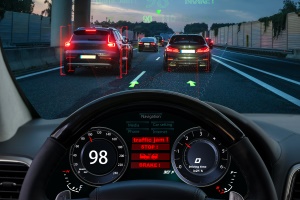5G is coming and mobile network operators’ responsibilities are about to irreversibly change, says Phil Thompson, VP, client partner executive, Spirent Communications.
5G isn’t just an upgrade of performance and coverage, it’s going to fundamentally shift the role of network operators too. The smart cities, automated vehicles and smart industry that 5G is supposed to bring about all take mobile network technology beyond the marker of mere performance. Operating a 5G network will mean thinking very hard about digital defence and protecting human life.
Automated vehicles, for example, will need the reliability of 5G networks to provide uninterrupted coverage wherever they go. The connectivity will be required to map its surroundings and keep its passengers, and other vehicles, safe. In 4G, a service outage might have resulted in annoyed customers and some lost revenue. When it comes to 5G, a service outage could mean a serious threat to customer safety.
While previous iterations of mobile network technology were largely hardware based, 5G uses software in an unprecedented way. The network virtualisation and software defined networks that 5Gs bring also mean that mobile networks are now open to the cyberattacks they’ve been “air gapped” from for so long.
New possibilities, new responsibilities
The reality is that network operators have never actually had to deal with anything like 5G before. Getting to grips with it will be a serious learning curve for most network operators.
Mobile network operators are often very good at testing for what should happen and often not great at testing for what shouldn’t. For the wide variety of applications of 5G, they’ll need to start thinking about physical danger, accidents, cyber attacks and real world harm.
They’ve never had to test a network for its ability to power a city’s physical infrastructure or an automated vehicle for its ability to stay on the road. Furthermore, they’ve been largely insulated from the ubiquitous cyberattack by their historical reliance on hardware that could be easily isolated from the broader internet.
Testing 5G networks will be critical to the success of individual networks as well as the success of the 5G project overall and the innovations that it is supposed to bring.
However, what worked for a 2, 3 or 4G network will not work for 5G. Capabilities, responsibilities and technologies are all changing. Testing needs to change too.
Until now, 4G networks have been tested in labs. However, the specificities of 5G make the prospect of lab testing too costly and too complex. Besides, they can’t recreate the conditions that 5G will be used in.
How to test for the worst
Given the new capabilities, as well as potential risks, of 5G driven innovation operators can look to a particular testing method which has been used in aeronautics, architecture and manufacturing to great success.
The Digital Twin has been used to test complex systems in which safety and reliability are absolutely critical. As it has worked for these sensitive industries, it can work for 5G.
The Digital Twin’s primary value in evaluating 5G networks is that it provides a software based testing environment that can evaluate those networks continuously and in real world conditions.
The Digital Twin can emulate any condition that the user defines. It can, for example, emulate the millions of devices and intense traffic that a 5G network will experience every day so that performance can continuously be evaluated. It can recreate new RAN technology, 5G radio frequency channel ranges and the densities they are likely to experience. It can emulate base stations, fronthaul devices and the interactions between evolving core networks and the cloud edge. It can emulate networking slicing one of 5G’s main offerings in which parts of the network are “sliced” and virtualised, offering different configurations and performance qualities for different use cases. It can even simulate GNSS satellite signals from any location and under any condition.
Where The Digital Twin really makes its mark is in its ability to emulate those rigorous real world conditions that will allow network operators to see just how safe and secure their network is. It can conjure smart factories, smart cities and any other 5G enabled use case in which networks can be tested in the real conditions which they would be put under in “the real world.”
Crucially, it can emulate impairments too. so that operators can see how networks operate when part of their infrastructure fails. In doing so, they can establish how to compensate for failure or accidents through network configuration and architectural adjustments.
As for the new frontier of security, the Digital Twin can emulate the kinds of attacks that a 5G network is likely to face including complex multi-vector attacks. It can continuously assess the secure posture of a given network and preemptively identify the vulnerabilities and risks that might imperil the network. Operators can also take advantage of continuously updated real-world threat intelligence to further secure their networks.
A Digital Twin can eventually become part of a continuous integration and continuous delivery environment so operators can continually improve and refine their infrastructure. Furthermore, the Digital Twin can test devices and assets as soon as they come onto the network. This allows testing to go hand in hand with innovation and scale to match the ambitions of the network operator.
Beyond safety and defence
The possibilities of the Digital Twin go beyond safety and reliability it can literally help network operators realise the potential of 5G too.

The testing process can be a process of discovering value too. Take smart factories, one of the much vaunted innovations that 5G is expected to bring. There will be all manner of variables which can affect how that smart factory can work the efficacy of signals against factory surfaces or the density of devices required in an industrial environment. Testing with a Digital Twin can inform those smart factory developers how 5G technology can be used, and how it can be improved for their particular use case.
It’s hard to overstate the profound obligations that come with 5G technology. It will fundamentally change what it means to be a network operator in the very near future. They’ve never had to deal with the “real world” risks that come with 5G and its various use cases. However, if they want to seize the opportunities that come with 5G, they’ll have to take the responsibilities too. That means testing in as rigorous and as authentic conditions as possible.
The author is Phil Thompson, VP, client partner executive, Spirent Communications.
Comment on this article below or via Twitter: @VanillaPlus OR @jcvplus






